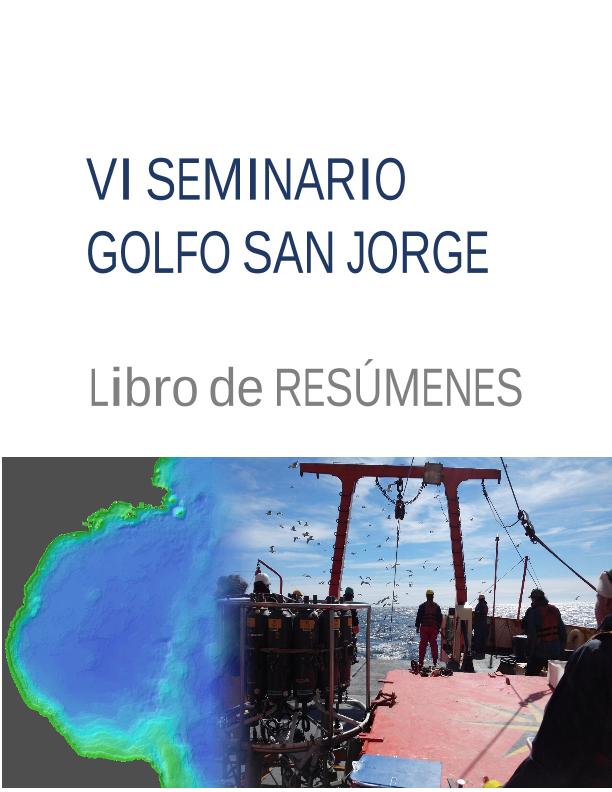Evento
En este estudio proponemos analizar la circulación oceánica en el golfo San Jorge con principal enfoque en el origen y destino de sus masas de aguas y eventos de surgencia en la costa suroeste. Las masas de agua que ingresan y egresan del golfo son clave para entender la circulación del golfo y su conexión con la plataforma adyacente. Además nos ayudan a detectar las principales fuentes de nutrientes, su influencia sobre procesos biológicos y tramas tróficas en el interior del golfo. Para ello se realizaron experimentos numéricos utilizando (ROMS) y un modelo acoplado Lagrangiano de partículas inertes (IBM). Los resultados indican que en verano y primavera el golfo expulsa agua por la parte norte en capas superficiales y subsuperficiales. La renovación de ese volumen de agua se realiza por la zona sur de la boca mayormente por aguas de origen costero de la plataforma. En otoño e invierno el golfo permanece más aislado y retiene más las partículas. Los experimentos con vientos diarios del 2016 indican que los eventos de surgencia se generan principalmente en el sector suroeste del golfo. In this study, we propose to analyze the circulation in Gulf of San Jorge with the main focus on the origin and fate of its waters masses and upwelling events on the southwest coast. The bodies of water entering and leaving the gulf are key to understanding the circulation of the gulf and its connection to the adjacent platform. They also help us detect the main sources of nutrients, its influence on biological processes and trophic plots inside the gulf. For this, numerical experiments were carried out using (ROMS) and a Lagrangian coupled model of inert particles (IBM). The results indicate that in summer and spring the gulf expels water from the northern part in superficial and subsurface layers. The renewal of this volume of water is carried out in the southern part of the mouth by coastal shelf waters of the platform. In autumn and winter the gulf remains more isolated and retains more particles. Experiments with daily winds of 2016 indicate that upwelling events are mainly generated in the southwestern coast of the gulf
Destino y origen de las aguas del golfo San Jorge: Experimentos numéricos
Tipo del evento:
Seminario
Nombre del evento:
VI Seminario Golfo San Jorge: Avances y retos futuros
Fecha del evento:
09/09/2019
Institución Organizadora:
Consejo Nacional de Investigaciones Científicas y Técnicas. Centro Científico Tecnológico Conicet - Centro Nacional Patagónico. Centro para el Estudio de Sistemas Marinos;
Universidad Nacional de la Patagonia San Juan Bosco;
Grupo San Jorge. Iniciativa Pampa Azul;
Título de la revista:
VI Seminario Golfo San Jorge: Avances y Retos futuros. Libro de resúmenes
Editorial:
Consejo Nacional de Investigaciones Científicas y Técnicas. Centro Científico Tecnológico Conicet - Centro Nacional Patagónico. Centro para el Estudio de Sistemas Marinos
ISSN:
2618-5334
Idioma:
Español
Clasificación temática:
Resumen
Archivos asociados
Licencia
Identificadores
Colecciones
Eventos(CESIMAR)
Eventos de CENTRO PARA EL ESTUDIO DE SISTEMAS MARINOS
Eventos de CENTRO PARA EL ESTUDIO DE SISTEMAS MARINOS
Eventos(IADO)
Eventos de INST.ARG.DE OCEANOGRAFIA (I)
Eventos de INST.ARG.DE OCEANOGRAFIA (I)
Eventos(IPATEC)
Eventos de INSTITUTO ANDINO PATAGONICO DE TECNOLOGIAS BIOLOGICAS Y GEOAMBIENTALES
Eventos de INSTITUTO ANDINO PATAGONICO DE TECNOLOGIAS BIOLOGICAS Y GEOAMBIENTALES
Citación
Destino y origen de las aguas del golfo San Jorge: Experimentos numéricos; VI Seminario Golfo San Jorge: Avances y retos futuros; Puerto Madryn; Argentina; 2019; 8-12
Compartir




